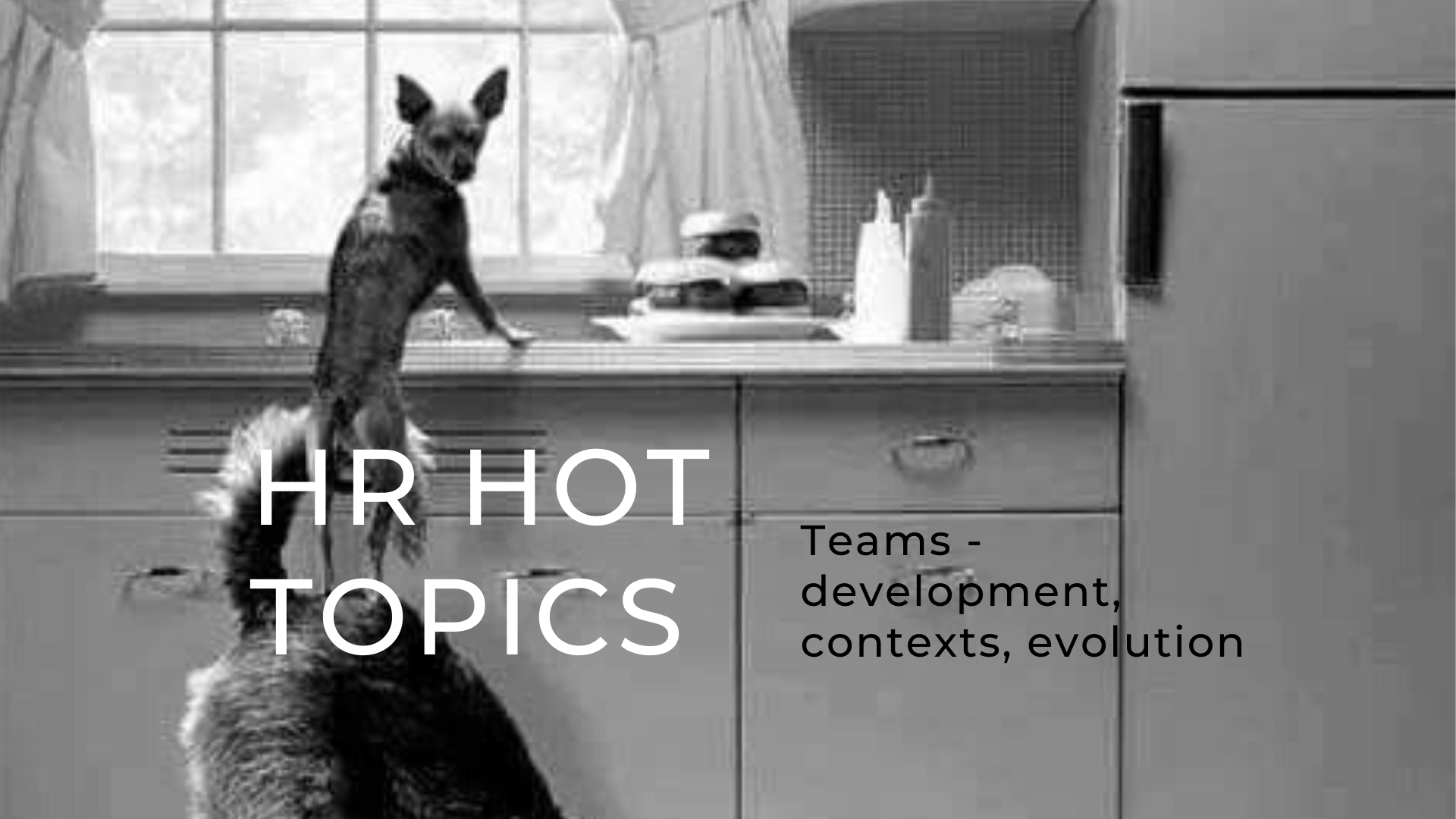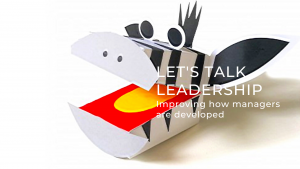At the recent CIPD Annual Conference and Exhibition I attended a session on the evolution of teams and our role in developing them, delivered by TMS Development International. As team roles and development is something that’s covered in a number of CIPD units I thought I’d put together a summary of both the theory and what the session said about how the concept has evolved and what the future might look like.
A definition and history of teams
The dictionary definition of a team is quite simple and puts it as:
Team [noun] people working together as a group to achieve something.
TMS’s session gave an interesting overview of how teams work has been affected by layers of evolution. They mapped the role of teams to specific periods in history…
- Pre-historic – here teams are about basic survival
- Neolithic stone age – tribes are formed
- Middle ages – manual labour is prevalent
- Industrial revolution – the focus is on productivity
- World War II – a significant increase in women in the workplace
- Cold War era – a focus on planned communities
- Early information ero – the PC era
- Information Age – the post PC era.
Here we see either a direct impact on how teams are formed and work or the indirect impact of contextual factors. Certainly most of us with have seen how computers and communication technology in general has changed the nature of work itself and how, and indeed where and when, work is carried out.
Tuckman’s model of team development
The best known contribution to the subject of team development and group dynamics is by Bruce Tuckman. According to Tuckman (1965), groups and teams are like living organisms that have certain predictable stages of development which are all necessary and inevitable in order for a team to grow, manage conflict, plan work and achieve outcomes. Over time the Tuckman’s model has been added to and is now usually shown as having 6 stages.

Stage 1 Forming – High dependence on leader for guidance and direction. Little agreement on team aims other than those received from the leader. Individual roles and responsibilities are unclear. Leader must be prepared to answer lots of questions about the team’s purpose, objectives and external relationships. Processes are often ignored. Members test tolerance of system and leader.
Stage 2 Storming – Decisions don’t come easily within group. Team members vie for position as they attempt to establish themselves in relation to other team members and the leader, who might receive challenges from team members. Clarity of purpose increases but plenty of uncertainties persist. Cliques and factions form and there may be power struggles. The team needs to be focused on its goals to avoid becoming distracted by relationships and emotional issues. Compromises may be required to enable progress.
Stage 3 Norming – Agreement and consensus is largely from among the team, who respond well to facilitation by leader. Roles and responsibilities are clear and accepted. Big decisions are made by group agreement. Smaller decisions may be delegated to individuals or small teams within group. Commitment and unity is strong. The team may engage in fun and social activities. The team discusses and develops its processes and working style. There is general respect for the leader and some of leadership is shared by the team.
Stage 4 Performing – The team is more strategically aware; the team knows clearly why it is doing what it is doing. The team has a shared vision and is able to stand on its own feet with little interference or participation from the leader. There is a focus on over-achieving goals, and the team makes most of the decisions against criteria agreed with the leader. The team has a high degree of autonomy. Disagreements occur but now they are resolved within the team positively and necessary changes to processes and structure are made by the team. The team is able to work towards achieving the goal, and also to attend to relationship, style and process issues along the way. Team members look after each other. Team members might ask for assistance from the leader with personal and interpersonal development.
Stage 5 Transforming – The team is operating at such an effective level that it can redefine its shared purpose and respond quickly to change. There are high levels of trust and communication is open.
Stage 6 Adjourning – Some teams disband or loose a few key members, which change the dynamics. The team acts as if it has experienced a loss and may show signs of sadness and reminisce about the past. Often the team has to re-form.
Tuckman, B. W. (1965) ‘Developmental sequence in small groups’, Psychological Bulletin, vol. 63, pp. 384-399.
The eagle eyed amongst you will have noticed that Tuckman created this model in the 1960s and, as we’ve seen from the summary above, the context of teams and organisations has changed. So, is Tuckman still valid in relation to how teams work now?
The team of the future
The section of TMS Development International’s session that I found the most interesting was where they identified possible features of teams of the future:
- Short-lived – this highlights the speed at which teams form and dispand, with a focus on meeting goals in the here and now rather than forming part of the organisation’s structure. The concept of ‘on-demand teaming’.
- Widely-distributed – consisting of team members who work remotely, facilitated by technology. This very much reflects the war for talent and how this type of team can help meet the challenge.
- Diversely-populated – gaining better problem-solving and decision-making, and the concept of ‘cultural brokerage’.
- Small in size – bigger isn’t always better with a trend for smaller teams (less than ten) being more successful than larger ones.
- Multi-skilled – with a range of areas of expertise they are versatile and able to solve problems.
- Co-bot collaboration – robots teaming up with humans to form teams. This can already be seen on car production assembly lines.
- Networked – a network of teams working together.



